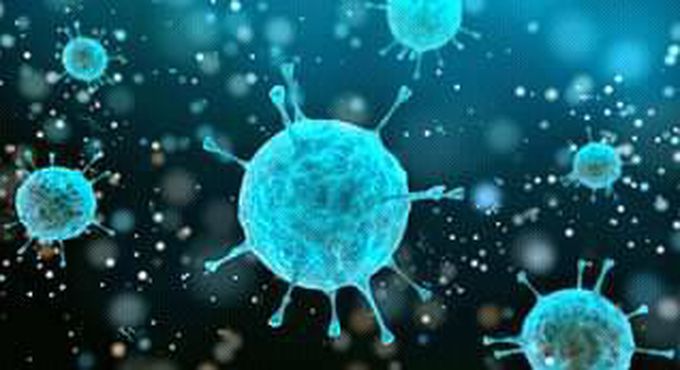
Anas Abubakarabout 2 months ago

SARS-CoV-2 Infection Cycle SARS-Cov-2 is a novel coronavirus that causes an acute respiratory disease that is known as covid-19. This disease is now a pandemic affecting and threatening the global pandemic. This article covers the main steps in the SARS-C0V-2 infection cycle. SARS-CoV-2 is an enveloped positive sense single stranded RNA virus. This virus belongs to a family of coronaviridae. Learn more about these coronaviruses and coronavirus disease (COVID-19). SARS-CoV-2 infection cycle The SARS-CoV-2 infection cycle involves these steps: Invasion Replication Direct cytopathic effects Dysregulated immune response Invasion The angiotensin converting enzyme 2 has been identified as the binding site for SARS-CoV-2 virus. This enzyme is found on the surface epithelium of the human lungs and has a role in catalyzing the conversion of angiotensin II. Here the spike glycoprotein is cleaved into S1 and S2 by a cell derived protease. The S1 glycoprotein binds to the angiotensin converting enzyme 2. The S2 glycoprotein is activated by the host Transmembrane serine protease known as TMPRSS2. This activation results in membrane fusion which then enables the virion to enter the cells through endosomes. Replication Once the virus gains entry into the cell, its viral components are replicated via the use of viral enzymes like RNA polymerase. These enzymes are virally induced by endosomal viral RNA release. While the SARS-CoV-2 virion is in the human cell it hijacks the host machinery so as to transcribe, replicate and translate its RNA genome and structural proteins before reassembly and encapsulation and release of the virions from the infected human cell. The 5’ two thirds of the viral genome encodes polyproteins PP1a and PP1ab These two polyproteins are known as replicases. These replicases PP1a and PP1ab are cleaved by 3C- like protease known as 3CLPro and a parpain-like protease (PLPro) into sixteen non-structural proteins. The important of these non-structural protein are an RNA dependent RNA polymerase (RdRp) forming a replication complex. This replication complex carries out the transcription of full-length negative strand. The 3’ end of the viral genome then encodes four structural proteins known as spike protein (S) envelope (E) protein, nucleocapsid (N) protein and matrix/membrane (M) protein together with set of accessory proteins. When transcription and replication of viral RNA genome and accessory proteins is over, there is trafficking of the newly synthesized viral protein from the endoplasmic reticulum to the golgi apparatus then the assembly of mature virions in a budding vessicle follows. Lastly the mature virion os released via exocytosis process.
Other commentsSign in to post comments. You don't have an account? Sign up now!
Related posts
VaricellaVaricellaIdentify the VirusRNA Oncogenic Viruses.Epstein barr virus pathogenesisHepatitis B virusHepatitis C virusBacterial infections. Bacteria are single-celled organisms with their instructions written on a small piece of DNA. Bacteria are all around us, including inside of our body and on our skin. Many bacteria are harmless or even helpful, but certain bacteria release toxins that can make you sick.Virus Vs BacteriaHepatitis virus

